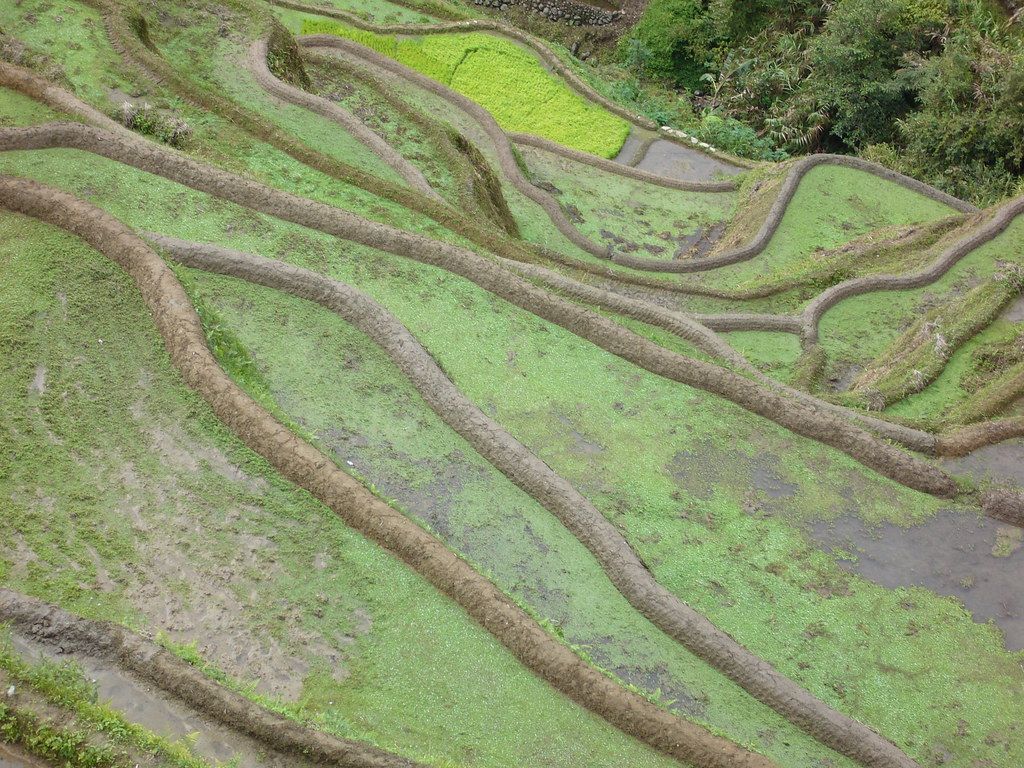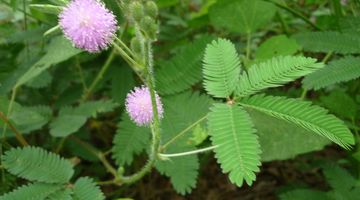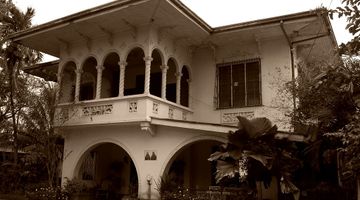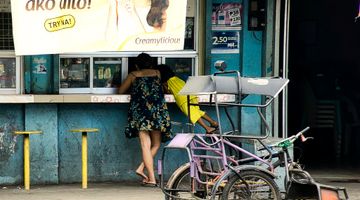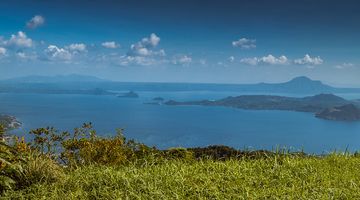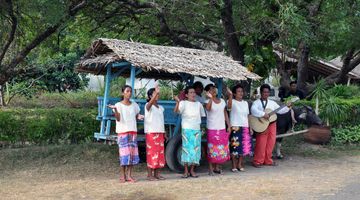Banaue Sights, POI and Things to Do
Undoubtedly the standing ovation of sights and activities in Banaue is witnessing first-hand the wonder of the 2000 year old rice terraces. Photographs and travel articles cannot do the beauty of this place the justice that it deserves. It was hands down, one of our absolute favourite experiences within the whole of the Philippines.
Hiking around rice terraces
The mirror-like, terraced steps with every shade of green, is a spectacular vision that depicts the harmonious blend of man and nature working beautifully together. There are many different hikes that travellers can choose to take and guided as well as unguided walks are on offer. Wake up early, try the local coffee, pack snacks and drinking water and spend the day getting gloriously lost amongst the amphitheatre-shaped Eighth Wonder of the World.
Rice terraces Viewpoint
Photography and view enthusiasts, take a walk or grab a ride on a 200PHP tricycle and head on over to the famous and easily accessible viewpoint. The image of the rice terraces on the 20 peso note was taken from this unique vantage point.
In addition to this lookout point, there are several other spectacular viewpoints, too, and all clearly marked along the roads.
Sunrise or dusk offers best lighting to view the terraces and interesting handcrafted Ifugao souvenirs can be purchased at these spots too.
Museum of Cordillera Sculpture
1.8 km south of downtown Banaue lies the well-known Museum of Cordillera Sculpture which showcases a superb collection and beautiful display of artwork sourced from the entire Cordillera region. A preserved and maintained traditional Ifugao house, coffins and even human skulls can be gawked at. Entrance admission is 100PHP and operating hours are from 8am to 6pm.
Banaue Museum
Another excellent activity for history buffs and anthropology aficionados is the Banaue Museum. This cultural goldmine contains traditional Igorot headdresses, clothing, jewelry and weaponry, including old books and photographs of Banaue in the early 20th century. Entrance fee is a mere 30PHP and opening hours are from 8am to 5pm.
A day trip to Batad
Something that we personally recommend including in your Banaue trip, is a visit to ](/en/philippines/batad). Batad has arguably, even more pristine and immaculate rice terraces than Banaue.
You can catch a jeepney to a place called the Saddle; this is the closest that a vehicle can go. You’ll then have to walk an additional 40-minute downhill trek to the village or to your inn. If you make it this far, we cannot oversell Tappiya Falls as an exquisite waterfall to hike to. The icy waters and majestic flow of water are pure bliss after the hike to get there, and the scenery is akin to something straight out of Jurassic Park.
Visiting traditional Tam-an village
Just 240 steps down from Banaue Hotel lies Tam-an Village where tourists can authentically experience the typical daily life of the Filipinos who live there. Native handmade woodcarvings, woven crafts and even the skeletons of village ancestors can be browsed. Easily accessible and with its stunning view it’s not hard to understand why this is the most visited village in Banaue. Entrance is free but villagers occasionally insist on a donation.
Bogyah Hot Springs
The wonderfully soothing, sulphuric water of the Bogyah Hot Springs is another must-see in Banaue. From the town centre one can take a 5km tricycle to the main road in Hapao followed by a scenic 50 minute walk (through the rice Hapao rice terraces) to the Hapao River and the healing Bogyah Hot Springs.
Alternating between the cool river water and the warm springs is an excellent means of relaxing weary muscles after all the hikes that one has inevitably experienced within Banaue. Entrance to this natural delight is free.
Lock & key in Banaue
Above the market area in Banaue hangs a suspension bridge that connects the main road with Batad. Many locals use the bridge as a means of crossing the river but recently tourists have started visiting, too. Travellers have begun mimicking the ‘lock and key’ custom of the bridges in Europe by fastening a padlocking to the edge of the bridge and throwing their key into the water below. With the fresh, gushing water under your feet and the breath-taking view of the rice terraces in the near distance, this suspension bridge is well worth a visit.

